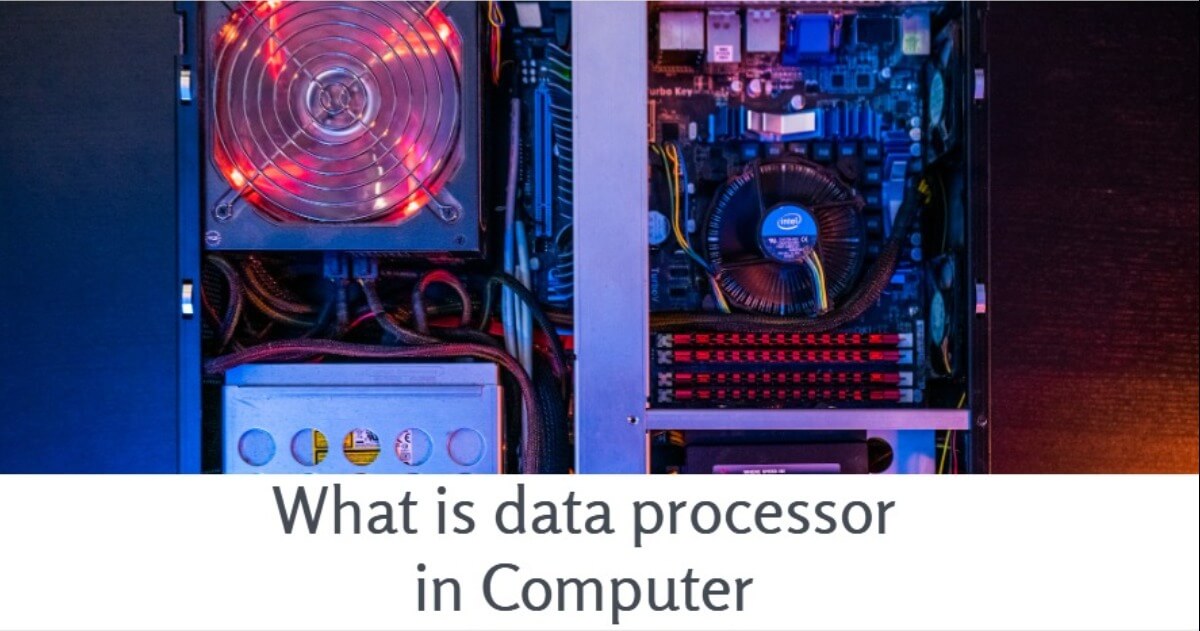A computer is commonly called a data processor because of its ability to store, process, and retrieve data at any time. Data processors are devices that execute operations on data, such as calculators or computers, and cloud service providers are also considered data processors as well.
The term data processor is broader because today's computers do more than just compute. For instance, A data processor may collect data from various sources, integrate it, arrange it in the proper order, and finally print it in the desired format. None of these actions require arithmetic computations in the traditional sense; so a computer is the best machine/device for doing them.
So, data processors collect, store, and process data. When they work with data, they can organize, modify, or adjust it as well as retrieve, use, and disclose it as needed.
What is the processor in computer?
The processor accepts various commands on computers. No computer can run any program without a processor. It takes a command input and outputs accordingly. The processor itself is a piece of hardware that takes commands from other hardware and software. The processor then "processes" the command and executes it using the associated hardware or software.
For example, suppose you want to log in to a PC with a password. You typed the password through the keyboard and entered it. The processor will then verify the password you provide with the password stored in your PC's system. If the password matches, the processor will log you in and take you to the next screen. If it doesn't match then it will display an error message from the software on the screen. It can also play a warning sound on the speaker.
The processor is called the central processing unit, or CPU. However, a computer can have more than one processor, such as a graphics processing unit (GPU). Of these, the CPU is the most important.
Processor units receive commands from random access memory, i.e., RAM. Whenever an instruction is given, the CPU decodes it and executes it to give the output.
Different parts of the processor:
To understand how the processor works, it is important to first understand the structure of the processor. A computer processor has four main components: an ALU, FPU, registers, and cache memory.
The Arithmetic Logic Unit, or ALU, handles all the arithmetic and logic operations of the computer. ALU deals with integers. A floating point unit, or FPU, on the other hand, deals with floating-point numbers, whose number range includes one decimal place.
Registers store various instructions received from different parts of the computer. The register dictates what the ALU needs to do and stores its information.
the processor has L2 and L3 memory. Due to this memory, it is possible for the processor to save the cache data locally. As a result, the processor itself can quickly complete the given command without exchanging data with RAM. Through this, the CPU becomes more efficient and works faster.
Where is the processor in computer?
A computer's processor is usually located on the motherboard. The CPU socket or CPU slot houses the processor. There is a lever attached to the CPU slot to make sure that the processor is securely attached to the motherboard.
How do data processors work?
Data processing is divided into three steps: acquiring input data, modifying the data, and managing the final output.
The main function of the processor is to provide output. When an instruction is given by the user within the computer device Then the program, data, information, etc associated with that instruction is temporarily stored in the RAM of the device. Now, the processor receives the temporarily stored data and information and then processes them through calculations. This task is completed in seconds. After processing the data and information, the processor instructs the necessary hardware and software to do the work. And finally, we get the output of the inputs given to us.
What is a mobile processor?
As you already know, not only the computer but also the smartphone in your hand are powered by a processor.
Structurally, there are some differences between mobile processors and computer processors. For example, although the GPU in a computer is separate, the GPU of a mobile processor is integrated into the CPU. Although there are structural differences, both processors work on essentially the same principles.
What is the difference between mobile and computer processors?
There are several differences between computer and mobile phone processors. First, a computer's processor can operate at its specified speed most of the time. But the mobile processor does not work at its stated speed most of the time because it will heat up the processor a lot, which is harmful to the device. Also, computer processors consume more power and generate more heat than mobile processors.
Finally, what is the processor? How does the processor work?
The processor, or CPU, is a very important part of a computer, mobile phone, and many other devices. A processor helps a computer run various programs by processing data. Recently, there has been a huge improvement in processors.
With the rise in popularity of multi-core processors, along with the invention of technologies like hyper-threading, computers can operate more quickly and efficiently. If you read the preceding article about the processor or CPU, you should have a basic understanding of it by now.
Read More:







0 Comments